Recognition
In what follows I will look at prizes designed for or awarded to people identified as mathematicians, and towards the end I will comment briefly on the recently awarded prizes at the International Congress of Mathematicians (August, 2018) in Rio de Janeiro. ...
 Joseph Malkevitch
Joseph Malkevitch
York College (CUNY)
Email Joseph Malkevitch
Introduction
People like to be appreciated, and mathematicians--being people, not artificially intelligent systems--are no exception. One way that society shows its appreciation of an individual's accomplishments is to award prizes--honoring people with recognition for their accomplishments with money, as a token of giving back for what has been given. In addition to winning prizes people can also get recognition from winning contests, and mathematics has its share of such contests now, as well as in the past. Another major source of recognition is to solve problems that have come to the attention of the scholarly community as being difficult or whose solution would represent breakthroughs because currently available methods don't seem to make it possible to answer these questions. Thus, people who made contributions to the list of important problems David Hilbert formulated at the start of the 20th century have been recognized for attaining a significant accomplishment. Scholars can also be recognized by conferences held in their honor or festschrifts (collection of scholarly papers) to mark a person's retirement or birthday. At least one winner of the Fields Medal, a prestigious math award which I'll discuss later, has turned the award down!
Perhaps the best known "scholarly" prizes are the Nobel Prizes, awarded for work in some STEM-related fields but also in other disciplines, such as literature. These prizes were set up by Alfred Nobel but there is no prize in mathematics. This has spurred stories as to why this might have been. In more recent years another prize has been added to the suite of prizes attached to the name Nobel, referred to by different names, but sometimes referred to as the Nobel Memorial Prize in Economics.
The fact that there is no Nobel Prize in mathematics does not mean that people who "studied" or even viewed themselves as mathematicians did not win a "Nobel Prize." For example, Bertrand Russell, regarded primarily as a mathematician, won the Nobel Prize in Literature. Kenneth G. Wilson won the prize in physics but was an undergraduate mathematics major at Harvard, switching over to physics for his graduate work. In the area of economics, the Nobel Memorial Prize has been awarded to many people who within the economics community would probably be seen as mathematicians, for example Lloyd Shapley (1923-2016). Many economists would know about the Shapley value but might not be able to read his paper entitled "Stochastic Games."
In the sciences a controversy surrounding the Nobel Prizes is that often it is a team that makes an achievement rather than an individual. This has been especially true in the experimental sciences. However, there are also many cases where an individual makes a breakthrough, even if he/she has built on the work others have done. While an individual may be recognized for a particular prize, nearly always scholars looking at the reasons the prize has been awarded can find other roots for the ideas that led to the prize. "Progress" on ideas is typically the result of the work over time by many people with "flashy" or "steady" talent.
In modern times prizes often come to people who have economic security at the time they get the prize. Many prizes, in particular the Nobel Prize, don't tend to be be given to "academic youngsters." While scientists may choose a career path whose goal is to win a Nobel Prize or some other particular prize, today, being in a situation where one can do science (increasingly doing science by tinkering in one's garage is getting harder) that will lead to a Nobel Prize will often give at least some modest economic security. However, there were times in the past when intellectuals had fewer options to earn a living if they pursued a career as an intellectual/scholar than they do today. Currently it is common for many scholars to work as researchers at institutions that offer the doctorate degree. But in the not overly distant past there were few jobs merely to do research for a university, government, or industrial company. There were many fewer colleges and universities in America 125 years ago than there are today and those jobs were not to "support" ivory tower research, they were to teach the students who came to the universities. And often these students were not a broad spectrum of society at the time but were heavily represented by the children of the already rich and powerful. Despite many more Americans having the opportunity for a career in STEM-related fields, it is much harder for the poor and other groups to pursue STEM careers than is desirable.
In what follows I will look at prizes designed for or awarded to people identified as mathematicians, and towards the end I will comment briefly on the recently awarded prizes at the International Congress of Mathematicians (August, 2018) in Rio de Janeiro. On the way I will also try to look at the historical setting (starting approximately with the middle of the 17th century) when mathematical scholarship was employed and/or rewarded.
Academies of science
Today we think of the world as organized into countries. The United Nations includes 193 different countries. However, in the past, parts of the world that now consist of many individual countries were under the control of kings, emperors, or were not organized politically! The evolution of democratic countries has been long in the making, and even today we see setbacks. Today, each of these national entities typically has an "academy of sciences" that provides a home for people honored by the "state" for their national contributions as a form of recognition and also as a way for people to be aware of those to turn to as resources for knowledge. Other names for such "science academies" today are labeled as scholarly societies or learned societies. These organizations often were born at a time when scholars ranged over a broad collection of topics, some of whose names are not used much any more--for example natural philosophy.
One can look at early academies of science as bringing attention to the names of people who were members, but we should give recognition to the fact that some of these societies played an important role in the nurturing and development of science or mathematics beyond the recognition that a country wanted to take credit for. In the English language usually people's understanding of the word sciences has changed with time. Today we talk about social science but for some, the word science was "reserved" for the study of the physical world (rather than the way people interact with the world). But the terminology for practitioners of science has changed with time, too. We may know the terms natural philosopher or natural scientist, but less ambiguity is given by the term physicist or chemist. Once a "field" of science has been carved out, it is not uncommon for it to be subdivided into parts in different ways. Thus, there is physics, astronomy, high-energy physics, low-energy physics, and nuclear physics. Often the labels are not distinct from each other but overlap.
Royal Society of London
While not the first of the academies of science, learning, or the arts, the Royal Society of London is of particular interest in the U.S. because it was founded in an English-speaking country and America was initially a British colony and as such had ties to Great Britain. Today, Great Britain, though a democracy governed by the people through Parliament, still has a queen. At the time of the founding of the Royal Society the purpose of creating the Royal Society was in part to enhance the prestige of the monarchy by calling attention to the prestige of the individuals supported through the Royal Society. In fact, the first president of the Royal Society was William Brouncker, 2nd Viscount Brouncker (1620-1684). He worked on the problem of computing the arc lengths of various curves, including the parabola and cycloid.
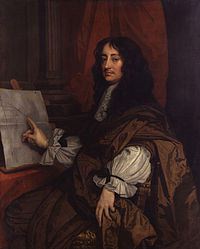
Figure 1 (Portrait of William Brouncker. Courtesy of Wikipedia.)
I had never heard of Brouncker prior to preparing to write this essay, but he gets recognition here for this accomplishment of being the Royal Society's first president. The first person on the list of presidents of the Royal Society whose name I associated (weakly) with mathematics was Sir Christopher Wren.
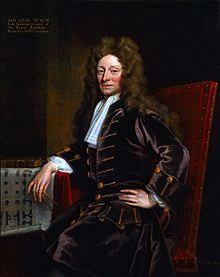
Figure 2 (Portrait of Christopher Wren. Courtesy of Wikipedia.)
Wren is better known to me as an architect, associated with St. Paul's Cathedral in London.
I also recognized the name of Samuel Pepys as having been a Royal Society president but I know of him for his authorship of his diary which helps people today understand what 17th century life was like. However, there have been mathematicians (often also known for work in sciences outside of mathematics) who were presidents of the Royal Society. These include Sir Isaac Newton, Sir George Airy, William Spottiswoode (noted for writing an early treatise on determinants), Sir George Stokes, Sir William Thomson, and in recent time Sir Michael Atiyah and Sir Robert May (known for his work in mathematical biology, in particular, issues related to "deterministic" chaos). Having had the honor of being Presidents of the Royal Society, using an historical lens, if one does not already know what these people accomplished someone with an interest in the history of mathematics might want to look into why in that person's day, they were granted the recognition they got.
Berlin Academy
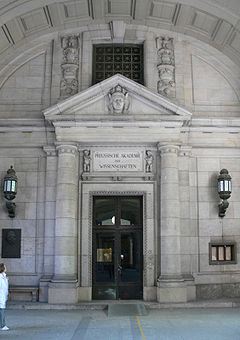
Figure 3 (Photo of the entrance to the former Prussian Academy of Sciences.
Courtesy of Wikipedia.)
Like many incarnations of early scholarly societies, those associated with the city of Berlin have had a complex story. This stems from the fact that what is modern day Germany was in the 18th century not the political entity of today. Furthermore, modern Germany emerged from the Germany of the Nazis, which had an "academy." The split of Nazi Germany into two countries, East and West Germany, resulted in the two countries' efforts to give recognition to their citizens but also to compete with each other. Eventually, East and West Germany reunited as the Germany of today.
Here is a very short list of the "scholars" (from Wikipedia) who were members of one of the incarnations of the Berlin Academy, with the dates of their associations:
Leonhard Euler 1741–1766
Joseph-Louis Lagrange 1766–1786
Montesquieu, foreign member 1746
Denis Diderot, foreign member 1751
Johann Heinrich Lambert, c. 1763
Immanuel Kant, foreign member 1786
Voltaire, c. 1750
Perhaps the person on this list with the least recognition is Lambert (1728-1777), who probably deserves more recognition for having shown the irrationality of pi as well as his work related to what today is called hyperbolic geometry. He developed a "formula" which relates the angle sum of a triangle in hyperbolic geometry to the area of the triangle.

Figure 4 (Portrait of Johann Lambert. Courtesy of Wikipedia.)
French (Paris) Academy
The French Academy of Sciences, which has also had many name changes, is a consequence of France's transition from a monarchy (when the Academy was founded) to one that existed when the monarchy was deposed in the revolution, and then a period when France was an empire under Napoleon.

Figure 5 (Painting showing a meeting of the French Academy. Courtesy of Wikipedia)
Leaders of the mathematics section of the French Academy from the start of the 19th century to the present (from Wikipedia) include many names that mathematicians will recognize but others of lesser fame.
1801–1822 Jean Baptiste Joseph Delambre
1822–1830 Joseph Fourier
1830–1853 François Arago
1853–1874 Léonce Élie de Beaumont
1874–1900 Joseph Bertrand
1900–1917 Gaston Darboux
1917–1942 Émile Picard
1942–1975 Louis de Broglie
1975–1996 Paul Germain
More recently Jean Dercourt and Odile Macchi
Leonard Euler's association with the French Academy was not as a member but as someone who gained recognition via winning prizes offered by the Academy. Early in his career he became associated with the Bernoulli family, among the most preeminent practitioners of mathematics in the early 18th century. His essays for prizes launched him to an appointment at another academy of sciences, the one in St. Petersburg (founded in 1724). Euler moved to Russia from Switzerland in 1727 at the young age of 20.
Paris Prize
Viewed in a historical framework, one of the most important prizes related to mathematics is the Paris Prize. To put the Paris Prize in context, we have taken a brief look at the emerging scholarly organizations which were emerging in parallel in different countries at the time (scholarly academies of science in Britain, Prussia, and France).
This prize was sponsored by different incarnations of the French Academy of Sciences which struggled with financial issues and the change from being a monarchy to a role after the French Revolution. In the 18th century, as the power of nurturing accomplishments of the intellect became useful for the different countries of Europe, different highly prestigious organizations emerged to "honor" and "promote" work in science and applied science, as mentioned above. The creation of such societies promoted and celebrated both the monarchies that ruled the countries where they were created and the creativity of their citizens as well.
In the 19th century as well as now, scholars who often did not see themselves as mathematicians in the distant past have put their talents to work on both the theoretical side and the applied side of mathematics. Such talented people emerged in many parts of Europe and in many other parts of the world. Some see in the Elements of Euclid a theoretical treatise because it provides an axiomatic structure for its investigations of geometry while others see it as a description of the world in which we live. When we look at what individual scholars have accomplished to be recognized (independent of prizes) for contributions to mathematics, we see these individuals typically made contributions to both the theory and applicability of mathematics. Think about the accomplishments of Archimedes, Newton, Liebniz, Gauss, Hilbert, Emmy Noether, and Ingrid Daubechies. While most people may know Emmy Noether for her contributions to abstract algebra, this does not do justice to the range of mathematics she accomplished. While some of these people may not have gotten the recognition they deserved in their own eras, seen in historical perspective they are important contributors to mathematics and its applications.
Euler and his prizes
In its early days, the French Academy offered a series of prizes to encourage the use of mathematics and science in getting insight into the world. The budding mathematician Leonhard Euler, destined to become one of the most prolific and influential practitioners of mathematics in the history of the subject, was partly launched on a successful career as a mathematician by the prizes he won from the Paris Academy. Let me start with some background about Euler. Euler's years spanned only years in the 18th century, 1707-1783. He was born in Basel, Switzerland but was destined to spend much of his life in other European locations.
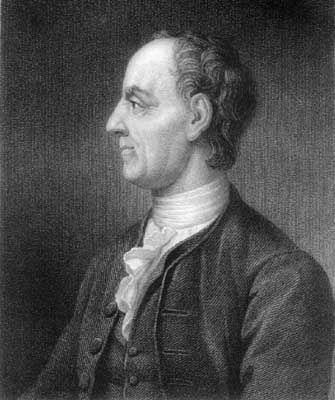
Figure 6 (Youthful portrait of Leonhard Euler.)
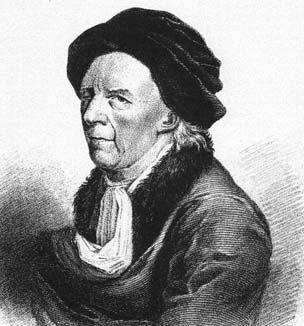
Figure 7 (Portrait of the elderly Leonhard Euler.)
Rather remarkably, Leonard Euler not only submitted many papers for the prizes offered by the Paris Academy but also won the prize or received honorable mention on many occasions. Here, drawn from information at the Euler Archive, are the 15 papers Euler entered into the Paris Prize competition, which were awarded by the "academy" under slightly changed names as the "Paris" academy evolved. The entries are indicated in order of number. It is noteworthy that some of the papers were written in Latin and others in French. Euler, in addition to his mathematical accomplishments, also was excellent at languages. Translations and originals of many of these and Euler's prodigious output of research are available at the Euler Archive. The indexing system for Euler's papers is known as the Eneström Index, which is named for the Swedish mathematician (and statistician) Gustaf Hjalmar Eneström (1852-1923).
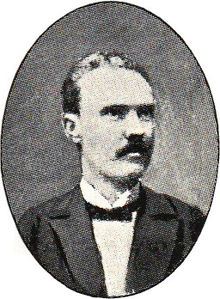
Figure 8 (Gustaf Hjalmar Eneström. Courtesy of Wikipedia.)
Euler entries for the Paris Prize:
E4: Meditationes super problemate nautico, quod illustrissima regia Parisiensis Academia scientarum proposuit
E34: Dissertatio de igne in qua ejus natura et proprietates explicantur
Note: This paper, "Dissertation on Fire," was written in 1737 and won the Paris Prize for 1738. The monetary size of this prize was so large that after winning it, together with his other prize winnings and income from various positions, Euler was a wealthy man for the remainder of his life.
E57: Inquisitio physica in causam fluxes ac refluxus maris
E78: Dissertation sur la meilleure construction du cabestan
E108: De observatione inclinationis magneticae dissertatio, illustrissimae academiae regiae scientarum Parisinae aequissimo judicio, pro anno 1743.
E109: Dissertatio de magnete.
E120: Recherches sur la question des inegalites du mouvement de Saturne et de Jupiter
E150: Meditationes in quaestionem observationibus temporis momentum determinandi
E384: Recherches sur les inegalites de Jupiter et de Saturne
E413: De promotione navium sine vi venti (Memoire sur la manier de suppleer a l'action du vent)
E414: Investigatio perturbationum quibus planetarum motus ob actionem eorum mutuam afficiuntur.
E415: Sur le roulis et le tangage
E416: Meditationes in quaestionem utrum motus medius planetarum semper maneat aeque velox, an successu temporis quampiam mutationem patiatur? & quaenam sit ejus causa?
E485: Reponse a la question proposee par l'academie royale des sciences de Paris, pour l'annee 1770.
E486: Reponse a la question proposee par l'academie royale des sciences de Paris, pour l'annee 1772.
It is also noteworthy that many of these questions have titles indicative of Euler's interests in the planets (physics) and ships. From today's vantage point it seems strange to have a great mathematician concerned with where to place masts on a sailing ship! As a mathematician Euler was not put off by prize questions that were not what today would be called applied mathematics, or even questions that were in areas outside of what today is viewed as the core realm of mathematical questions. In the 18th century the boundaries of what today might be called theoretical versus applied or applicable mathematics were not so pronounced; many mathematicians were also "scientists" in a broad sense--not merely "mathematicians." Euler had vision problems much of his life and was totally blind for many years before he did, but it seemed to have had very little effect on his mathematical productivity.
Hilbert Problems
At the start of the 20th century, in 1900, one of the world's premier mathematicians, David Hilbert (1862-1943) challenged the community of those interested in the progress of mathematics to solve 23 problems, now known as the Hilbert Problems.

Figure 9 (Photo of David Hilbert. Courtesy of Wikipedia.)
Ten of these unsolved problems were highlighted by Hilbert at the meeting of the International Congress of Mathematicians which was held in Paris in 1900. Hilbert was one of the many plenary speakers at this congress, which included a variety of names that will be recognized by advanced practitioners of mathematics and mathematical historians of today.
It is impossible for me to resist saying something about Hilbert's Third Problem because it sheds light on one of my favorite theorems. It is a fact about two-dimensional Euclidean geometry, that if one has two simple polygons (simple closed curves in the plane that are polygons) that have the same area, then one can cut one of the polygons into a finite number of triangular (polygonal) parts and reassemble these pieces in the style of a jigsaw puzzle to form the other polygon.
Polygons with this property are called equidecomposible. The original polygons can have edge lengths that are not even rational numbers. Thus, we might be talking about a rectangle whose size lengths (in inches) are $\sqrt{18}$ and $\sqrt{2}$ (hence area 6) and a triangle whose base is 6 inches and altitude is 2 inches. This fact is often called the Wallace-Bolyai-Gerwien Theorem. Hilbert's Third Problem, not a direct translation of his original question, can be thought of as the following: Given two Euclidean tetrahedra with the same area of base and same length altitude, are the two tetrahedera equidecomposible? This question was the first Hilbert problem to be resolved and it was answered by the German-born mathematician Max Dehn (1878-1952). Dehn emigrated to America and died in the United States. He also did important work in knot theory and promoted the idea that artists should take an interest in mathematics and that art could be inspired by mathematics.
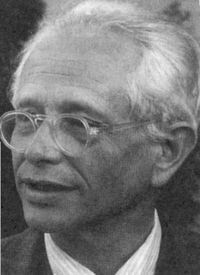
Figure 10 (Photo of Max Dehn. Courtesy of Wikipedia.)
The form of Dehn's answer to Hilbert's Third Problem involved the fact that a Euclidean cube and regular tetrahedron with the same volume are not equidecomposible. He proved this by developing what is today called the Dehn invariant. If two convex polyhedra of the same volume have different values for their Dehn invariant, they can't be equidecomposible. The important thing for mathematics was that Dehn showed that for understanding volume in 3-space, calculus was necessary even for the case of polyhedra. Like many good problems there continues to be research in the area of ideas related to Hilbert's Third Problem to this day.
Paul Erdős and the "book"
Paul Erdős was a Hungarian-born mathematician who was not confined to living in a particular country, but traveled the world in pursuit of promoting mathematics and carrying it out himself. Erdős (1913-1996) collaborated in joint work with many mathematicians in many countries, and such was the prestige associated with writing a joint paper with Erdős that the concept of having an Erdős number arose. Erdős's co-authors have Erdős number 1. To compute your Erdős number you have to determine the length of the shortest "chain" of joint research papers which link you with someone who wrote a paper with Erdős. If you have published some joint research papers you can check your own Erdős number by going to this "tool" (by entering your name on the first line of the form, and selecting "use Erdős" for the second line and click on search) for computing Erdős numbers maintained by the American Mathematical Society!

Figure 11 (Photo of Erdős. Courtesy of Wikipedia.)
Erdős worked in a broad collection of mathematical domains ranging from number theory to combinatorics and graph theory, to discrete geometry. In addition to winning a variety of prizes himself, he was noted for having put out cash incentives for solving mathematical problems that he found particularly frustrating that he or others had not solved.
Here is a sample problem of the kind that Erdős put forward as wanting to see solved. Study the minimal number of distinct distances $d(n)$ that can occur for $n$ points in the (Euclidean) plane. Erdős provided some upper and lower bounds for $d(n)$. In an exciting development, in 2015 Larry Guth and Nets Katz came very close to giving a complete answer to this question.
During his lifetime Erdős often stayed with Ronald Graham and his wife Fan Chung when he was in the New York City area. Graham and Chung both have Erdős number 1 many times over.
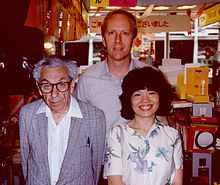
Figure 12 (Photo of Erdős, Fan Chung (Ronald Graham's wife), and Ronald Graham,.Courtesy of Wikipedia)
Graham spent many years heading the mathematics group at Bell Laboratories and his wife worked there as well as heading a similar operation at Bellcore. Their mathematics includes both theoretical and applied contributions to mathematics.
After Paul Erdős's death, Graham and Chung continue to champion his work and have awarded some of the cash prizes that Erdős made in his lifetime. While Erdős offered relatively large cash sums for a person with limited economic means, he without doubt encouraged attention to specific problems and more broadly particular areas of mathematics with his prize system. It appears that some people who won his cash awards preferred to frame the check they got rather than cash it!
Paul Erdős also championed the metaphor that "God" kept a book with all of the niftiest proofs of appealing mathematical results. As an example, consider the lovely question raised by Victor Klee concerning how many vertex guards are sometimes necessary and always sufficient to see the boundary and interior of a simple Euclidean polygon, which was initially answered by Václav Chvátal, using a very nice argument. But the "book proof" is due to the (late) Steve Fisk. (Proof: triangulate the polygon, three-color its vertices, and place the vertex guards at set of vertices whose color class is the smallest in size!)

Figure 13 (A simple polygon with 11 sides ($n = 11$) whose 3-coloring shows that 3 guards placed at the blue vertices can "see" the whole polygon (and its interior). Can you find the minimum number of vertex guards? It turns out 2 guards actually suffice. In general, finding the minimum number of guards is computationally hard. Diagram courtesy of Wikipedia.)
Fields Medal
In August 2018 four new winners of the Fields Medal were announced. The Fields Medal is unusual in "rewarding" contributors to mathematics in part based on an age test. People who are over the age of 40 ineligible.
In describing the work of these mathematicians an attempt is sometimes made to relate how some the work they did connects to applications of mathematics. However, in a general way it is for theoretical mathematics (pure mathematics) that the prizes are typically awarded. The work that was honored in 2018 would not be easy to read even by many research mathematicians, and the applications related to their work are more "roots" of future applications than work that is already affecting people's daily lives, the way, say, mathematical programming does.
Fields Medal Winners 2018
When the Fields Medals for a particular ICM (International Congress of Mathematicians) are awarded, the official award includes a brief statement regarding the accomplishments of the medal winners. Following the award, commentaries about the mathematics that the medal winners have developed are often offered both for the benefit of the mathematics community and the broader public. Unfortunately, the frontiers of mathematics where significant progress can be made that leads to a Fields Medal often is not easy to describe to other experts, no less the general public. It is typically harder to describe the work of Fields Medalists than it is to describe the work of people who win Nobel Prizes in such highly technical fields as physics and chemistry. It is often possible to explain to the general public the significance of these latter prestigious awards more easily.
Here are the 2018 Fields Medalists and their citations:
Caucher Birkar (photo available on Fields Medal web site)
"For the proof of the boundedness of Fano varieties and for contributions to the minimal model program."
Alessio Figalli
"For contributions to the theory of optimal transport and its applications in partial differential equations, metric geometry and probability."

Figure 14 (Photo of Alessio Figalli. Courtesy of Wikipedia.)
"For contributions to the theory of optimal transport and its applications in partial differential equations, metric geometry and probability."
Peter Scholze
"For transforming arithmetic algebraic geometry over p-adic fields through his introduction of perfectoid spaces, with application to Galois representations, and for the development of new cohomology theories."

Figure 15 (Photo Peter Scholze (2014). Courtesy of Wikipedia.)
Akshay Venkatesh (photo available on Fields Medal website)
"For his synthesis of analytic number theory, homogeneous dynamics, topology, and representation theory, which has resolved long-standing problems in areas such as the equidistribution of arithmetic objects."
Longer explanations of the significance of the accomplishments of these four remarkable mathematicians are available here (click on writeup).
The Fields Medal carries a relatively modest cash prize associated with it. However, in recent years more sizable prizes are being awarded to mathematicians, e.g.the Wolf Prize and Abel Prize. Such awards are not only gratifying to those who receive them but the winners and the mathematics associated with the winners receives recognition both within the mathematics community and the public at large. Recognition to individuals is also accompanied by attention to showing mathematicians and lay people alike the importance of the mathematics to today's society.
References
Especially noteworthy is the series of five volumes originally published by the Mathematical Association of America (now distributed by the American Mathematical Society) dealing with Euler in honor of the Euler Tercentenary Celebration.
Volume 1
Sandifur, C., The Early Mathematics of Leonhard Euler
Volume 2
Dunham, W. The Genius of Euler
Volume 3
Sandifur, C., How Euler Did It
Volume 4
N. N. Bogolyubov, G. K. Mikhailov,
and A. P. Yushkevich, Editors, Euler and Modern Science
Volume 5
Bradley, R. and L. D'Antonio, C. Edward Sandifer, (Eds.), Euler at 300: An Appreciation
Other important references about Euler:
Bradley, R. and C. Sandifer, (Eds.), Leonard Euler: Life, Work and Legacy, Elsevier, Amsterdam, 2007.
Calinger, R ,Leonhard Euler: mathematical genius in the enlightenment. Princeton University Press, 2015.
Varadarajan, V., Euler Through Time: A New Look at Old Themes, American Mathematical Society, Providence, 2006.
Other references:
Hahn, R., The Anatomy of a Scientific Institution: The Paris Academy of Sciences, 1666-1803, University of California Press, Los Angeles, 1971.
Boltianskii, V., Hilbert's Third Problem, Wiley, NY, 1978
Mehrtens, H. and H. Bos, I. Schneider (eds.), Social History of Nineteen Century Mathematics, Birkhäuser, Boston, 1981.
Those who can access JSTOR can find some of the papers mentioned above there. For those with access, the American Mathematical Society's MathSciNet® can be used to get additional bibliographic information and reviews of some these materials.
 Joseph Malkevitch
Joseph Malkevitch
York College (CUNY)
Email Joseph Malkevitch


 Joseph Malkevitch
Joseph Malkevitch













